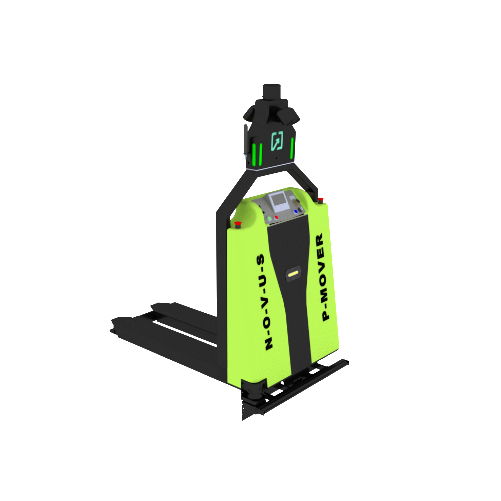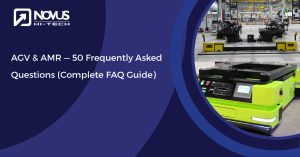What is Aftermarket Telematics?
Aftermarket telematics refers to the technology and solutions that are added to vehicles post-production to monitor and manage various aspects of fleet operations. Unlike Original Equipment Manufacturer (OEM) telematics, which are built into vehicles during production, aftermarket telematics systems can be retrofitted to any vehicle, regardless of make, model, or age. This flexibility allows fleet managers to upgrade and modernize their existing fleets without needing to invest in brand-new vehicles equipped with OEM telematics systems.
In the context of fleet management, aftermarket telematics plays a critical role by providing real-time data on vehicle location, performance, and driver behavior. These systems often include GPS tracking, diagnostics, and communication features that help fleet operators enhance the efficiency, safety, and profitability of their operations. By leveraging the insights gathered through aftermarket telematics, companies can make data-driven decisions that lead to more streamlined operations, reduced costs, and improved overall productivity.
Benefits of Aftermarket Telematics
- Improved Fleet Visibility and Tracking: One of the primary advantages of aftermarket telematics is the ability to track vehicles in real-time. Fleet managers can monitor the exact location of each vehicle, allowing for better route planning, faster response times, and more accurate delivery estimates. This level of visibility also helps in reducing vehicle downtime and optimizing fleet utilization.
- Enhanced Driver Behavior Monitoring: Aftermarket telematics systems provide detailed reports on driver behavior, including metrics such as speed, harsh braking, and idling time. By analyzing this data, fleet managers can identify risky driving patterns and implement training programs to promote safer driving practices. This not only helps in reducing the likelihood of accidents but also leads to lower insurance premiums.
- Reduced Fuel Costs and Emissions: Fuel is one of the largest expenses in fleet management, and aftermarket telematics can play a significant role in minimizing this cost. By providing insights into driving behavior and route efficiency, telematics systems help in identifying opportunities to reduce fuel consumption. Additionally, monitoring vehicle performance can lead to timely maintenance, preventing issues that might otherwise lead to increased fuel usage and emissions.
- Increased Operational Efficiency: Aftermarket telematics allows for the automation of various fleet management tasks, such as dispatching, route optimization, and vehicle maintenance scheduling. By streamlining these processes, companies can achieve higher levels of efficiency, reducing operational costs and improving service delivery.
- Improved Safety and Security: With aftermarket telematics, fleet managers can enhance the safety and security of their vehicles and drivers. Features such as geo-fencing, real-time alerts, and remote diagnostics enable proactive management of potential risks. In the event of theft, telematics systems can assist in quickly locating and recovering stolen vehicles.
Discover how Aftermarket Telematics enhances vehicle performance and efficiency.
Download our free brochure for expert insights and trends!
Use Cases for Aftermarket Telematics
Aftermarket telematics is versatile and can be applied across various industries:
- Long-haul trucking: Ensures efficient route planning and real-time tracking of goods.
- Construction: Monitors equipment usage and fuel consumption.
- Delivery and service fleets: Optimizes delivery routes and tracks driver performance.
- Public transportation: Improves route efficiency and passenger safety.
- Rental cars: Provides tracking and vehicle diagnostics to enhance customer service.
Market Trends in Aftermarket Telematics
The aftermarket telematics market is witnessing significant growth due to several key trends:
- Growth of the Connected Vehicle Market: The demand for connected vehicles is on the rise, driving the adoption of aftermarket telematics solutions.
- Increasing Demand for Data-Driven Fleet Management: Businesses are leveraging data analytics to optimize fleet operations, and aftermarket telematics provides the necessary data to do so.
- Rise of Cloud-Based Telematics Solutions: Cloud technology is enabling more scalable and cost-effective telematics systems.
- Integration with AI and Machine Learning: AI and ML are being integrated into telematics solutions, allowing for predictive analytics and smarter fleet management.
These trends are shaping the future of aftermarket telematics, making it an essential component of modern fleet management strategies.
Aftermarket Telematics Solutions
Types of Aftermarket Telematics Devices
Aftermarket telematics solutions encompass a wide range of devices, each serving specific functions to enhance fleet management. Here are some of the most commonly used types:
- GPS Trackers: GPS trackers are the backbone of most telematics systems, providing real-time location data for vehicles. These devices enable fleet managers to monitor the whereabouts of their vehicles, optimize routes, and improve overall logistics efficiency. GPS trackers can be installed on any vehicle, making them a versatile choice for fleet operators.
- OBD-II Devices: On-board diagnostics (OBD-II) devices are plugged into a vehicle’s OBD-II port, typically located under the dashboard. These devices capture a wide range of data from the vehicle’s onboard computer, including engine performance, fuel usage, and fault codes. OBD-II devices are especially useful for monitoring vehicle health and ensuring timely maintenance.
- Cellular Routers and Modems: These devices enable vehicles to connect to the internet, providing a continuous flow of data between the vehicle and the fleet management system. Cellular routers and modems are essential for transmitting real-time data, especially in remote areas where standard GPS trackers may not have reliable coverage. They also support applications like video telematics, which require a stable internet connection.
- Dashcams: Dashcams are increasingly being integrated into telematics systems to provide video evidence of driving incidents. These cameras can record the road ahead, the driver’s behavior, or both, offering valuable insights for accident investigation and driver coaching. Some advanced dashcams come with AI capabilities that can detect risky driving behaviors and send alerts in real-time.
- Sensors (Fuel Level, Temperature, etc.): Various sensors can be added to telematics systems to monitor specific aspects of vehicle performance or cargo conditions. For example, fuel level sensors help in tracking fuel consumption and detecting potential fuel theft, while temperature sensors are crucial for monitoring perishable goods during transportation. These sensors provide additional data points that can be crucial for specialized fleet operations.
Features of Aftermarket Telematics Systems
Modern aftermarket telematics systems offer a variety of features designed to enhance fleet management. Here are some key features to consider:
- Real-time GPS Tracking: Real-time GPS tracking is a fundamental feature of telematics systems. It allows fleet managers to monitor vehicle locations in real-time, improving route planning, dispatching, and overall fleet visibility. Real-time tracking also helps in responding quickly to emergencies or delays.
- Route Optimization: Route optimization features use data from GPS trackers and traffic updates to suggest the most efficient routes for vehicles. By optimizing routes, fleet managers can reduce fuel consumption, minimize travel time, and improve service delivery times. This feature is particularly valuable for delivery fleets and long-haul trucking.
- Geofencing and Curfews: Geofencing allows fleet managers to set virtual boundaries around specific areas. When a vehicle enters or exits these predefined zones, the system triggers alerts. Curfews can also be set to restrict vehicle use during certain hours. These features are useful for preventing unauthorized use of vehicles and ensuring compliance with operational policies.
- Driver Behavior Monitoring: Telematics systems can monitor various aspects of driver behavior, such as harsh braking, speeding, and rapid acceleration. This data is crucial for identifying risky driving patterns and implementing corrective measures. By promoting safer driving practices, companies can reduce the likelihood of accidents, lower insurance costs, and extend the lifespan of their vehicles.
- Fuel Level Monitoring and Reporting: Fuel level monitoring features track fuel consumption and provide alerts for unusual usage patterns, such as sudden drops in fuel levels that might indicate theft. Detailed fuel reports help in identifying inefficiencies and optimizing fuel usage, leading to significant cost savings.
- Engine Diagnostics and Maintenance Alerts: Engine diagnostics features allow telematics systems to read and report on engine health indicators, such as fault codes and performance metrics. Maintenance alerts can be set up to notify fleet managers when a vehicle is due for service, ensuring timely repairs and reducing the risk of breakdowns.
- Cargo Monitoring (Temperature, Security): For fleets transporting sensitive or perishable goods, cargo monitoring features are essential. Sensors can track the temperature, humidity, and security of the cargo in real-time, ensuring that goods are transported under optimal conditions. Alerts can be triggered if conditions fall outside of acceptable ranges, allowing for immediate corrective action.
- Video Telematics for Driver Coaching and Accident Investigation: Video telematics combines dashcam footage with telematics data to provide a comprehensive view of driving incidents. This feature is invaluable for accident investigation, as it provides clear evidence of what happened before, during, and after an incident. It also supports driver coaching by allowing managers to review footage and provide feedback on driving performance.
- Data Integration with Fleet Management Software: A key feature of advanced telematics systems is the ability to integrate with existing fleet management software. This integration enables seamless data flow between systems, allowing for more comprehensive analysis and reporting. It also reduces the need for manual data entry, saving time and reducing the risk of errors.
How to Choose the Right Aftermarket Telematics Solution
Selecting the right aftermarket telematics solution requires careful consideration of several factors. Here’s a guide to help you make an informed decision:
- Consider Your Fleet Size and Type of Vehicles: The size and composition of your fleet play a significant role in determining the type of telematics solution you need. For larger fleets, scalability and ease of management are crucial, while specialized fleets (e.g., construction, public transport) may require specific features like cargo monitoring or heavy equipment tracking.
- Identify Your Specific Needs and Requirements: Before choosing a telematics solution, assess your specific operational needs. Do you need real-time tracking, driver behavior monitoring, or advanced diagnostics? Understanding your requirements will help you select a system that aligns with your operational goals and challenges.
- Evaluate Features, Pricing, and Ease of Installation: Not all telematics systems offer the same features, and pricing can vary significantly. Compare different solutions based on the features they offer, their cost, and the ease of installation. Some systems might require professional installation, while others can be set up with minimal technical knowledge. Consider the total cost of ownership, including any recurring subscription fees.
- Look for Compatibility with Your Existing Fleet Management Software: If you’re already using fleet management software, ensure that the telematics system you choose can integrate seamlessly with it. Compatibility reduces the need for additional software and allows for more efficient data management and reporting.
- Importance of Data Security and Privacy: With telematics systems collecting vast amounts of data, security and privacy are paramount. Choose a solution that offers robust data encryption, secure data storage, and compliance with relevant data protection regulations. Ensuring the security of your data helps protect your business from potential breaches and legal issues.
Aftermarket telematics solutions offer a wide range of devices and features that can significantly enhance fleet management. By carefully selecting the right system based on your fleet’s needs, you can improve efficiency, reduce costs, and ensure the safety and security of your operations.
Installation and Implementation of Aftermarket Telematics
Planning and Preparation
The successful installation and implementation of aftermarket telematics begin with thorough planning and preparation. The first step is to assess your fleet’s specific needs. This involves understanding the types of vehicles in your fleet, the operational challenges you face, and the goals you aim to achieve with telematics. For instance, if your primary concern is real-time tracking and fuel efficiency, you might prioritize GPS trackers and fuel level sensors. If driver safety is a top priority, dashcams and driver behavior monitoring tools will be essential.
Once you have identified the telematics devices that best suit your needs, the next step is to determine the ideal installation locations for each device. GPS trackers, for example, are typically placed in a concealed location within the vehicle to prevent tampering, while dashcams should be mounted on the windshield for an unobstructed view of the road. Ensuring the proper placement of these devices is crucial for optimal performance.
Developing a training plan for both drivers and fleet managers is another critical aspect of preparation. Drivers need to understand how the new systems will affect their daily routines, while fleet managers should be well-versed in the functionalities and benefits of the telematics system. A well-structured training program will help in easing the transition and maximizing the system’s effectiveness from the start.
Installation Process
When it comes to the actual installation, one of the key decisions is whether to opt for professional installation or handle it in-house. Professional installation is often recommended for complex systems or when multiple devices need to be integrated, as it ensures that all components are correctly installed and configured. Professional installers also have the expertise to troubleshoot potential issues during installation, reducing the risk of malfunctions later on.
For fleets with smaller budgets or simpler telematics needs, self-installation can be a viable option. Many aftermarket telematics devices, such as OBD-II plug-ins, are designed for easy installation, requiring minimal technical expertise. However, even in these cases, following the manufacturer’s installation guidelines is crucial to avoid issues related to improper setup.
The installation process typically begins with mounting the devices in their designated locations. For example, GPS trackers are usually installed within the vehicle’s dashboard, while dashcams are mounted on the windshield. Proper wiring and connection are vital to ensure that all devices communicate effectively with the telematics platform. Poor wiring can lead to intermittent data transmission, reduced device lifespan, and even vehicle malfunctions.
Data Integration and System Configuration
Once the hardware installation is complete, the next step is to connect the telematics devices to the cloud platform. This integration allows for real-time data transmission and remote monitoring, enabling fleet managers to access critical information from anywhere. The process typically involves setting up a secure connection between the devices and the telematics software, ensuring that data is accurately and continuously synced.
System configuration is where you tailor the telematics solution to meet your specific needs. This involves setting up dashboards, customizing reports, and configuring alerts and notifications based on your operational requirements. For instance, you might want to set up alerts for excessive speeding, unauthorized vehicle use, or low fuel levels. These alerts can be sent via SMS, email, or directly to the fleet management platform, allowing for quick responses to potential issues.
The successful installation and implementation of aftermarket telematics require careful planning, proper installation, and thorough system configuration. By following these steps, you can ensure that your telematics solution is fully optimized to enhance your fleet’s performance, safety, and efficiency.
Benefits and ROI of Aftermarket Telematics
Implementing aftermarket telematics can yield significant benefits for fleet operations, leading to a substantial return on investment (ROI). By quantifying these advantages, businesses can better understand the financial impact of adopting telematics solutions.
Quantifying ROI
Calculating the ROI of aftermarket telematics involves comparing the initial investment in devices, installation, and subscription fees against the savings and increased revenue generated by the system. For instance, fleet operators can achieve ROI within a few months by reducing fuel consumption, lowering maintenance costs, and improving overall efficiency. Research indicates that companies implementing telematics systems can see an average ROI of 30-40% within the first year.
Reduced Fuel Costs
One of the most immediate and measurable benefits of aftermarket telematics is the reduction in fuel costs. With real-time GPS tracking and route optimization, fleet managers can ensure that drivers take the most efficient routes, minimizing idle time and avoiding traffic congestion. Additionally, monitoring driver behavior, such as excessive speeding and harsh acceleration, helps reduce fuel wastage. Studies have shown that telematics can reduce fuel consumption by up to 15%, resulting in significant cost savings for large fleets.
Improved Driver Behavior
Driver behavior monitoring is another key feature of aftermarket telematics that directly impacts ROI. By tracking metrics such as speeding, harsh braking, and rapid acceleration, fleet managers can identify and address risky driving behaviors. Implementing driver coaching programs based on telematics data can lead to safer driving practices, reducing the likelihood of accidents and associated costs. Improved driving behavior also contributes to fuel savings and extends the lifespan of vehicles, further enhancing ROI.
Lower Maintenance Costs
Telematics systems can significantly lower maintenance costs by providing real-time engine diagnostics and maintenance alerts. By monitoring the health of vehicle components, such as the engine, brakes, and tires, fleet managers can schedule preventative maintenance before issues escalate into costly repairs. This proactive approach not only reduces maintenance expenses but also minimizes vehicle downtime, ensuring that operations continue smoothly. On average, fleets using telematics can reduce maintenance costs by 10-15%.
Increased Operational Efficiency
Telematics solutions enhance operational efficiency by streamlining fleet management processes. Real-time tracking, route optimization, and automated reporting reduce the time and effort required to manage fleets, allowing managers to focus on strategic tasks. The integration of telematics data with fleet management software enables better decision-making and faster responses to operational challenges. This increased efficiency translates into higher productivity and profitability, contributing to a positive ROI.
Enhanced Customer Satisfaction
Aftermarket telematics can also lead to improved customer satisfaction, which indirectly contributes to ROI. With accurate real-time tracking, businesses can provide customers with precise delivery times and updates, enhancing transparency and trust. Additionally, optimized routes and efficient operations ensure timely deliveries, improving service reliability. Satisfied customers are more likely to return and recommend the service, leading to increased revenue and long-term profitability.
Conclusion
Summarizing the Key Benefits of Aftermarket Telematics
Aftermarket telematics solutions offer a wealth of benefits that can transform fleet operations, making them more efficient, cost-effective, and safe. By implementing these systems, businesses gain unparalleled visibility into their fleet’s activities, leading to enhanced operational efficiency. The real-time tracking, route optimization, and driver behavior monitoring enabled by telematics not only reduce fuel consumption but also extend the lifespan of vehicles through timely maintenance alerts. Furthermore, the safety and security of both drivers and cargo are significantly improved, with features like geofencing, video telematics, and engine diagnostics. Collectively, these advantages contribute to a substantial return on investment (ROI), often within the first year of implementation.
The Future of Aftermarket Telematics and Emerging Trends
As technology continues to evolve, the future of aftermarket telematics looks promising, with several emerging trends set to further enhance the capabilities of these systems. One of the most significant trends is the integration of telematics with artificial intelligence (AI) and machine learning (ML). This combination allows for more advanced data analysis, enabling predictive maintenance, smarter route planning, and even autonomous driving features. AI-powered telematics can analyze vast amounts of data to provide deeper insights into fleet performance, helping businesses make more informed decisions.
Another trend is the increasing adoption of cloud-based telematics solutions. Cloud technology offers scalability, easier updates, and improved data accessibility, allowing fleet managers to access critical information from anywhere, at any time. This shift towards cloud-based systems also facilitates seamless integration with other fleet management tools, creating a more cohesive and efficient operational ecosystem.
The rise of electric vehicles (EVs) is also influencing the development of aftermarket telematics. As more fleets transition to EVs, telematics systems are being adapted to monitor battery health, charging efficiency, and energy consumption. This helps fleet operators optimize their electric vehicle usage, ensuring that they can maximize the benefits of this emerging technology.
Additionally, regulatory compliance is becoming an increasingly important aspect of fleet management, and telematics systems are evolving to help businesses meet these requirements. For instance, in regions where emissions regulations are strict, telematics can monitor and report on fleet emissions, ensuring compliance and helping avoid penalties.
Lastly, cybersecurity will continue to be a crucial focus as telematics systems become more integrated and connected. Ensuring that data transmitted between devices and the cloud is secure will be essential to maintaining the integrity and trustworthiness of telematics solutions.
The benefits and advancements in aftermarket telematics are clear, and as the technology continues to develop, its value to fleet operations will only increase. Whether you manage a small fleet of delivery vehicles or a large fleet of long-haul trucks, aftermarket telematics can provide you with the tools you need to operate more efficiently, reduce costs, and enhance safety.
Now is the time to explore how aftermarket telematics can benefit your fleet operations. Evaluate your current challenges and consider how telematics can address them. Start by identifying your specific needs, whether it’s reducing fuel costs, improving driver behavior, or increasing operational efficiency. Research the various telematics solutions available and choose the one that best fits your fleet’s requirements.
By taking the initiative to implement aftermarket telematics, you’ll be positioning your fleet for success in a competitive and rapidly evolving industry. Don’t wait until your competitors gain the advantage—explore aftermarket telematics today and unlock the full potential of your fleet. Explore the latest in aftermarket solution for your fleet at Novus HiTech and equip your vehicle with the best in advanced driver assistance technology.






















